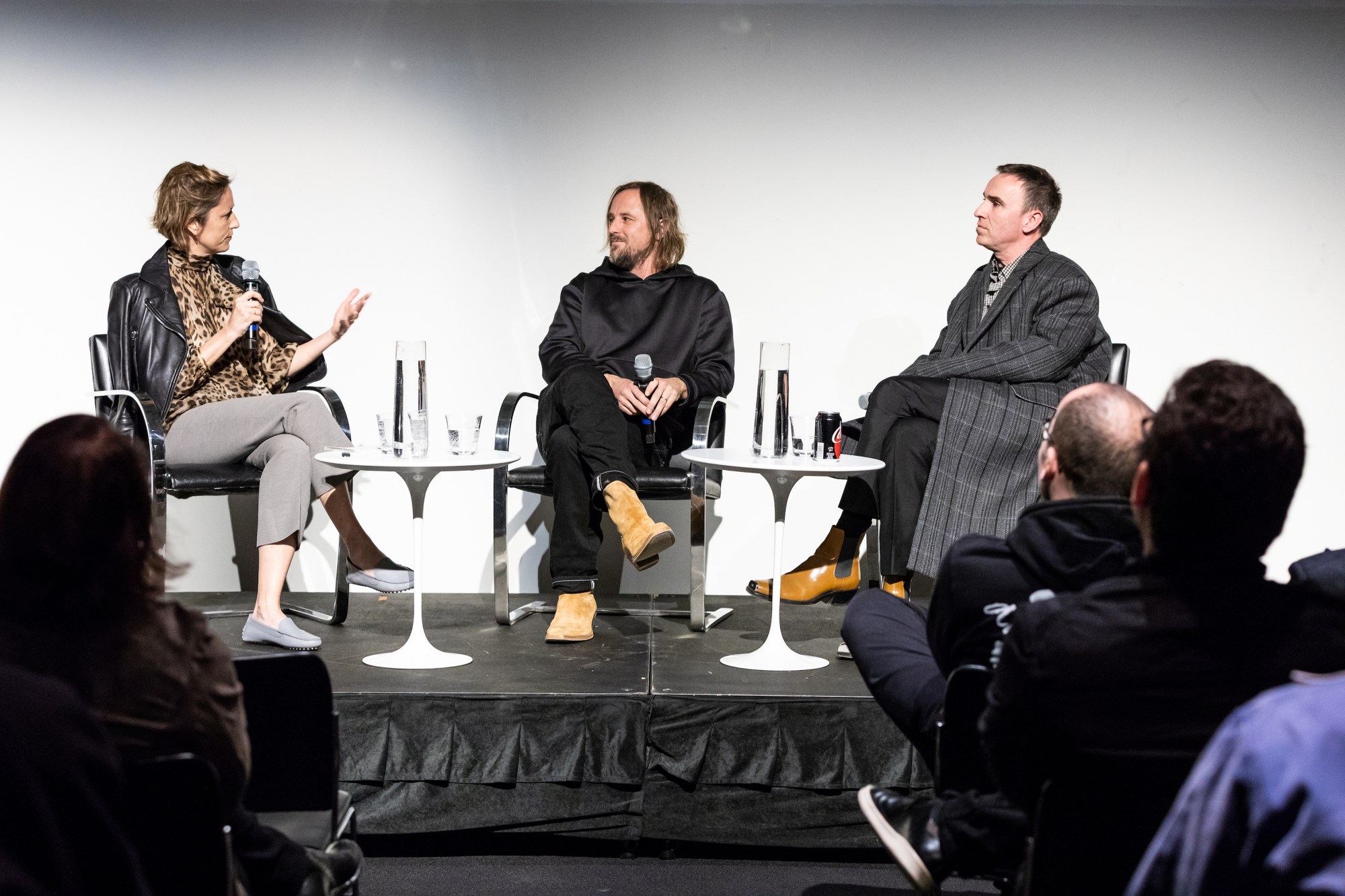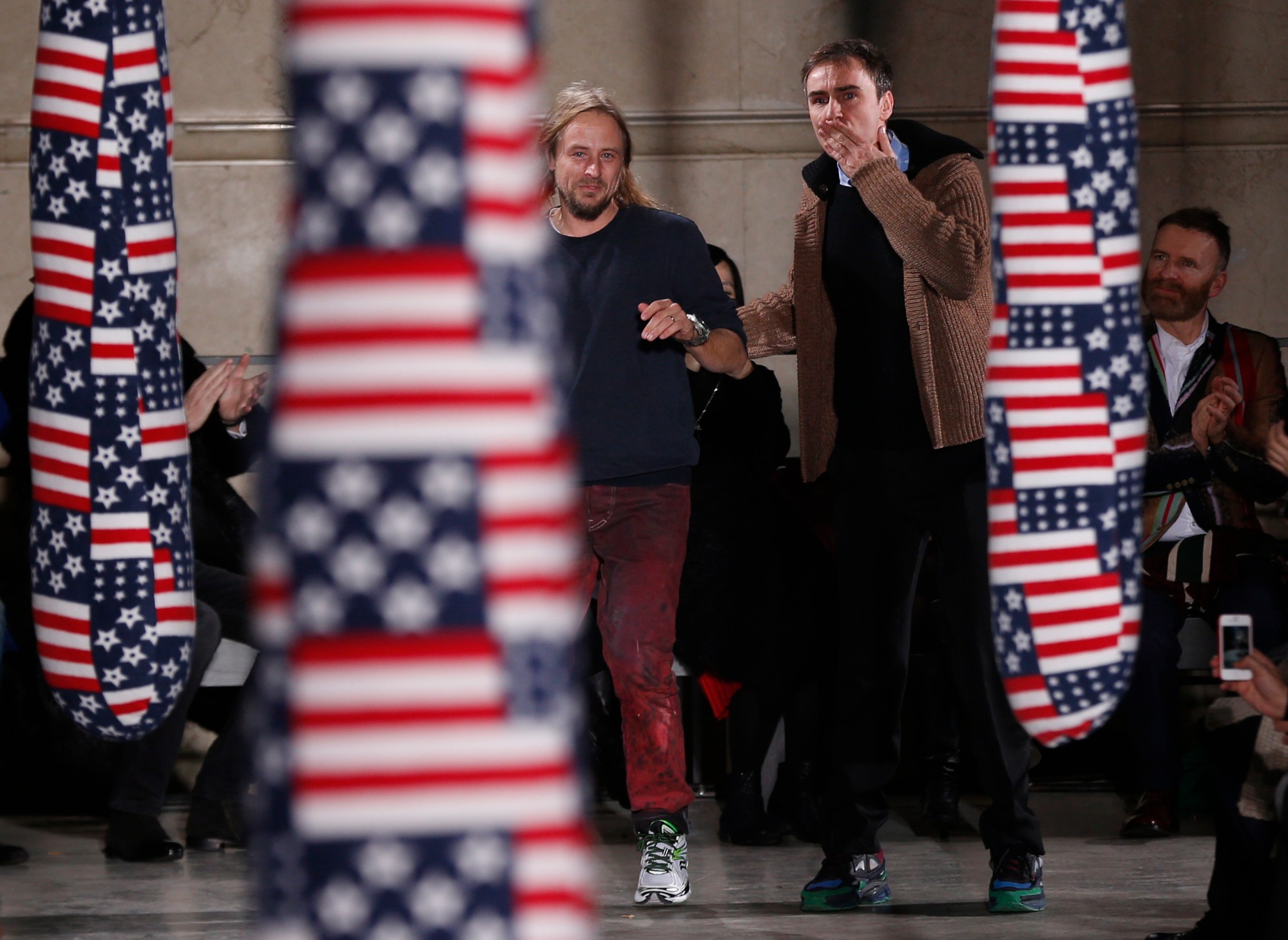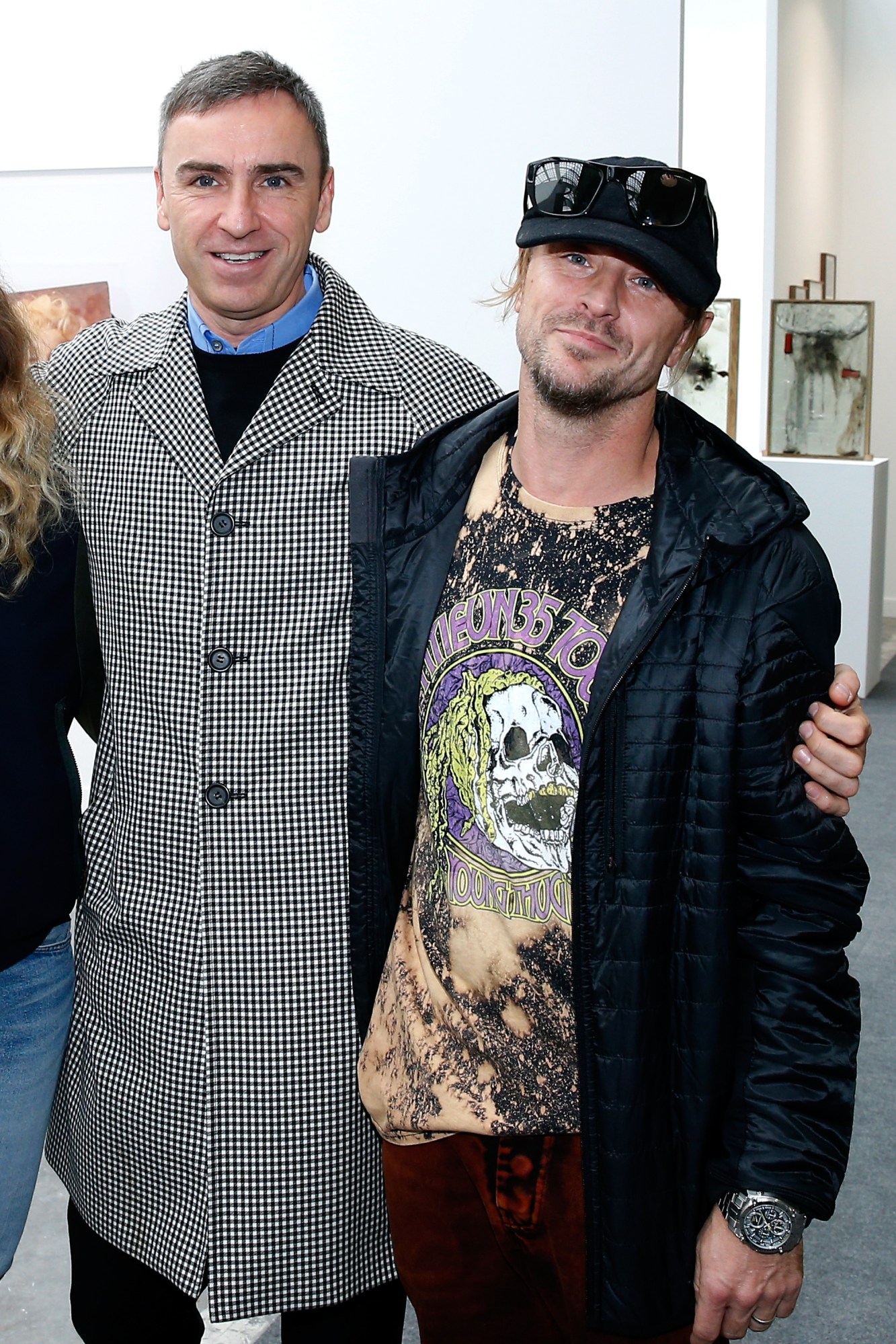Harvard’s Graduate School of Design has hosted many esteemed guest speakers over the past few years, including Zaha Hadid, Jonathan Franzen, Virgil Abloh, and as of last night, Raf Simons. The Belgian designer was in town this week for a panel discussion alongside his close/friend collaborator Sterling Ruby, and the requisite can of Coke Zero (Raf is apparently the first guest to request an auditorium beverage rider, but legends are allowed their liberties — apparently Hadid was chain-smoking in the lobby.)
Raf probably would have felt at home in the GSD even without Sterling or the soda. The erstwhile furniture designer studied industrial design before moving into fashion — “let’s give it a shot” — during the era of the Antwerp Six’s group shows in London. “It became something to aspire to, he recalled. Raf was also heavily inspired by the exhibitions of Belgian curator Jan Hoet, whose revolutionary Chambres d’Amis show in Ghent saw famous artworks spread through 59 private homes in Belgium. “Suddenly all this art that we kind of knew was in the domestic environments,” Raf said. “Every since, I got obsessed with art.”
Sterling and Raf’s collaborations also have a similar power to transform our conceptions of space. They designed one of fashion’s first real co-designed collections for fall/winter 14. (“It’s not tagged Raf Simons for that season, it’s tagged you and me together,” Raf said. Sterling has splattered paint throughout the interior of Raf’s Tokyo boutique, and last year, designed the interior of Raf’s giant new Madison Avenue flagship. To the shock of last night’s audience, Raf casually let slip that the latter store is actually ephemeral(!), further F-ing with our idea of what retail stores are. The two didn’t just talk shop, though — from the power of youth to the polarizing nature of Virgil Abloh, here’s what was discussed last night.

Raf could have worked for General Motors instead of Calvin Klein.
The fashion legend almost ended up as a car designer. “I entered industrial design and graduated with furniture,” he said last night, after admitting that he chose his college based on the fact that there were cool-looking kids smoking in the courtyard. “I almost ended up doing car design,” he revealed. So much for calling Frank Ocean’s “deep subconscious straight boy fantasy” (a.k.a. car obsession) a cliché.
Buddies before business partners.
“You and I started to see people doing things that were a cross-pollination between art and fashion,” Sterling said. “But not doing it very well.” Raf’s issue with collabs for collab’s sake is that it rarely feels authentic. “In lots of cases it’s not natural. It’s very often a business decision,” he griped. “[Ours] has a lot to do with friendship, and interest in each other’s practices.” Apparently Sterling at first copped flack from his overlords for moving into fashion. “My art dealers would say, ‘It’s a bad idea, don’t do this,’” he said, but he was becoming disenchanted with what art was becoming. “If there was a commodification within fashion, there was certainly a commodification within art.” Both men eventually felt liberated by moving closer into each other’s spheres.
A second opinion can keep your ego in check.
Despite launching his iconic menswear brand as a solo venture, Raf strongly believes in collaboration. “If I think for myself — and I hope it doesn’t sound pretentious — but I always think I have a great idea,” he said slowly. “If I can share with somebody whose work I admire, it’s a greater idea. It’s a better idea.” Outsider perspectives can disrupt your rhythm in a good way by kicking you off your pedestal.

Sterling isn’t afraid of encroaching on Raf’s turf.
Did Sterling ever try his hand at pattern cutting? Moderator Jessica Morgan was asking about the pair’s fall/winter 14 collaboration. “He was telling me how to do it!” Raf jokingly complained. “Well — I mean, yes…” Sterling admitted. Despite. or perhaps because of this, the result is Raf’s favorite collection ever.
Raf taught Sterling the empowering nature fashion.
“When I was 13 my mother gave me my first sewing machine,” Sterling recalled of growing up in a small town not unlike Raf’s. “When I was 13 and I was wearing something, it gave me a vague power, but I never thought of it as fashion.” One of the most rewarding points of his career was seeing kids walk down the street in pieces from Raf Simons x Sterling Ruby. “You don’t see that in art… it’s a behavioral case study of how people present themselves in public.”
Raf dreams of being dunked on by Cathy Horyn.
“There used to be critical reporters,” Raf said, “but they kicked them out.” Sterling agreed that critical reporting has been diluted, but it’s a problem that plagues the art world too. “I wish, wish, wish there was more critical writing about fashion,” Raf continued in a grave voice. (If homeboy wants to hook us up with a new wardrobe, we’ll try our damndest.)
Sometimes we all need a good bitching session.
It’s fairly established that Raf left Dior because of the immense stress of producing multiple collections a year. Sterling is one of the few people to whom Raf can voice his frustrations at the fast-churning industry. “ Fuuuck the system,” Raf said of fashion’s speed and demands. “Sometimes I don’t really like to share those things with other fashion people. But I like to share it with Sterling.” Then I can think, maybe it’s not so bad.

Raf is done talking about Virgil Abloh.
In answer to an question about Virgil’s appointment at Louis Vuitton, Raf flashed a smirk at the audience before sinking back in his chair and handing the mic to Sterling. Ya boy’s colder than a Coke Zero.
Youth needs to attack the establishment.
In 2000, Raf began teaching at the University of Applied Arts Vienna. He noted that kids had obsessions about having all the surroundings in place — structure, money, press office. Raf’s advice? The only thing you need is an idea. “I like to see young people coming into fashion with something that is not only completely different, but that is sublime,” he said. He implored the new generation of disrupters to keep attacking the establishment. “You need to be reactionary.” Sterling seconded this call to break the system.
Who’s here for 90s nostalgia?
Not Raf. “I don’t know if this is just a golden age fallacy, that we think the old times were better,” started a kid in the crowd during question time. “Subcultures in the 90s seem to have more sincerity, to have more energy.” Raf’s response? “I always think that the future is better. If I don’t think that I can’t move on any more.” He then told a story about how he was recently in Chandigarh, India. During the 50s, pioneering architects like Le Corbusier helped transform the city into a modernist marvel. Raf continued that a project of such scale would not have been possible without an optimistic embrace of the future. “It’s almost utopian, but it’s not,” he said, “because it’s still there, and it’s still incredibly functional.”
Americana deserves to be fucked with.
Raf decided to take the Calvin Klein position at a very interesting time. Not just in American politics, but in the history of the brand, which had been somewhat latent before the Belgian was brought on board. “We decided this was a way to fuck with Americana,” Sterling said. “And to use that as a kind of push for American fashion, which had been at an all-time low. To try and create icons for this fashion brand during a time of global turmoil, and in the way that America was represented, was dangerous but also exciting.”
